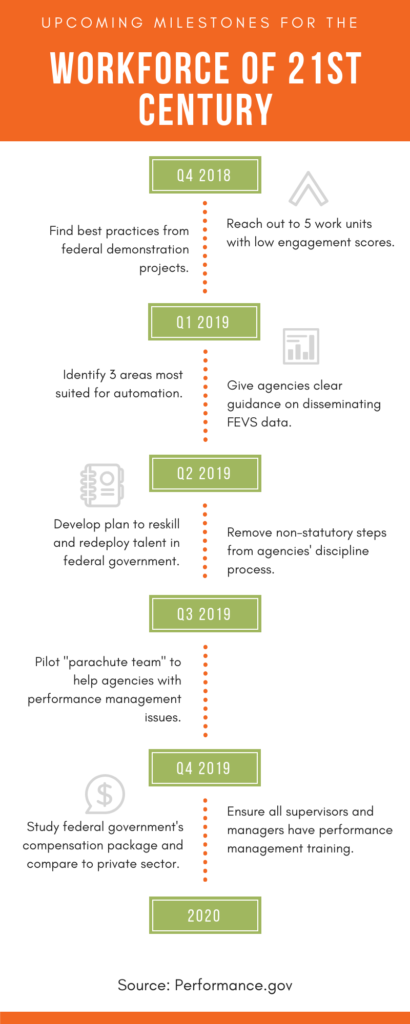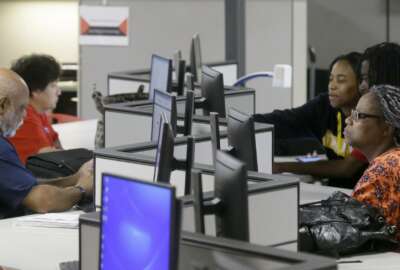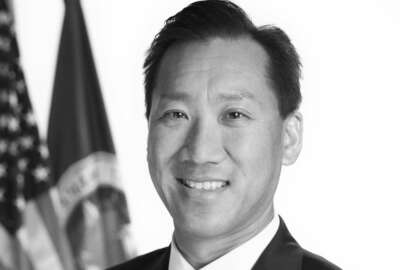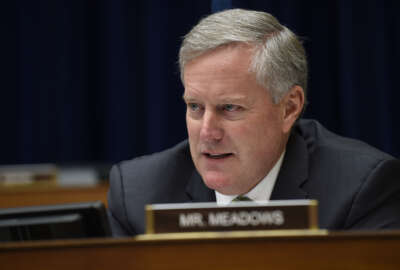Trump administration juggling multiple priorities to modernize federal workforce
The Trump administration has been busy putting the pieces in place for hiring process improvements and reskilling initiatives.
Best listening experience is on Chrome, Firefox or Safari. Subscribe to Federal Drive’s daily audio interviews on Apple Podcasts or PodcastOne.
The Trump administration is still largely in “fact-finding” mode, but it’s listing small, incremental progress toward a broad and very detailed effort to transform the federal workforce and the framework that governs and manages it.
According to the latest update on Performance.gov, the administration has spent the past three months of the summer searching for best practices, working with low-scoring agencies on employee engagement and identifying specific executives to take the lead on individual workforce initiatives.
This is the third update to Performance.gov since the administration first announced 14 cross-agency priority goals as part of the new President’s Management Agenda.
Though the developments of the past three months could seem minor, they indicate where the administration is headed as it continues efforts to prepare today’s federal workforce for future skills and address long-held frustrations with hiring and performance management.
But the latest updates also show just how many plates senior leaders at the Office of Management and Budget and Office of Personnel Management are spinning when it comes to federal workforce modernization.
OMB and OPM are leading ongoing conversations on improving the hiring process, reskilling federal employees and refocusing on performance management, to name a few activities.
Hiring flexibilities
The administration is scheduled to propose administrative and regulatory changes by next March to simplify the hiring process and give agencies more flexibilities, according to the Performance.gov update.
By the Office of Personnel Management’s last count, it took agencies an average of 106 days to hire a new employee in fiscal 2017.
According to OMB’s timeline of completed milestones, the administration has already developed an automated hiring tool for managers and evaluated promising best practices from existing federal demonstration projects and alternative personnel systems.
Homeland Security Department Chief Human Capital Officer Angela Bailey is taking the lead on the administration’s goal to shorten the hiring process. She was one of a few CHCOs who offered up her own ideas for altering the hiring process before the Senate Homeland Security and Governmental Affairs Committee earlier this year.
Administration officials also met with the President’s Management Council and their chief human capital officers to discuss options for alternative ways to assess and measure candidates to the Senior Executive Service.
Reskilling
The Office of Management and Budget called on Scott Cameron, the Interior Department’s principal deputy assistant secretary for policy, management and budget, and Dorothy Aronson, chief information officer at the National Science Foundation, to focus on the broader reskilling activities for the federal workforce.
Over the summer, OMB identified agencies interested in taking the lead on certain reskilling opportunities for federal employees in specific occupations. It also prepared a survey for the chief executive councils to identify existing agency resources and career pathing tools.
“The surveys results will be used to develop a path forward to pilot and expand development of advanced technologies to enable a changing and increasingly mobile federal workforce to shape their careers and meet the predicted agency skills needs of the future,” the update reads.
And by the beginning of this new fiscal year, OMB is expected to identify the areas most suited for automation and then pilot those capabilities to demonstrate the potential return on investment, according to the update.
Employee engagement and performance
VA’s Deputy Chief Human Capital Officer Nathan Maenle and Camille Hoover, executive director for National Institute of Diabetes and Digestive and Kidney Diseases, are taking the lead on employee performance and engagement. Hoover helped promulgate a tool that NIH piloted, which is designed to help federal managers more quickly sift through and analyze Federal Employee Viewpoint Survey (FEVS) data.
A White House “tiger team” of leadership development fellows used this tool to work with low-performing agencies on the 2017 FEVS, the update said. Together, the tiger team helped low-performing agencies find opportunities to improve employee engagement.
Over the past few months, the administration drafted guidance designed to help low-performance agencies improve their FEVS scores. In the future, all agencies will be asked to give OPM more detail on their plans to improve engagement within six weeks of the final FEVS report publication.
“Each agency will provide OPM with a list of the identified work units by component/bureau,” the update reads. “In addition, each agency will provide a brief overview of the approach the agency and each of components/bureaus will take to reach 20 percent improvement within 60 days after the first submission.”
In addition, the White House tiger team has been collecting best practices to address poor employee performance from agencies.
Copyright © 2025 Federal News Network. All rights reserved. This website is not intended for users located within the European Economic Area.
Nicole Ogrysko is a reporter for Federal News Network focusing on the federal workforce and federal pay and benefits.
Follow @nogryskoWFED
Related Stories

Desire for pay demonstration, job training highlight OMB workforce summit





